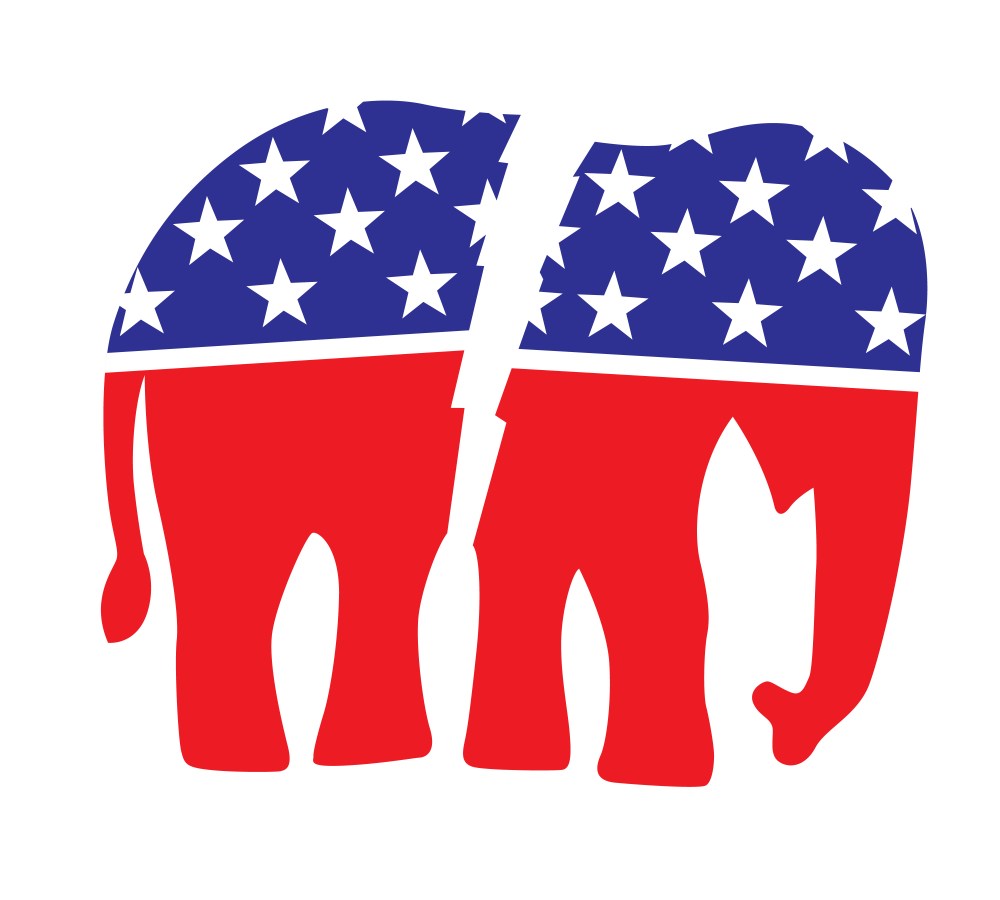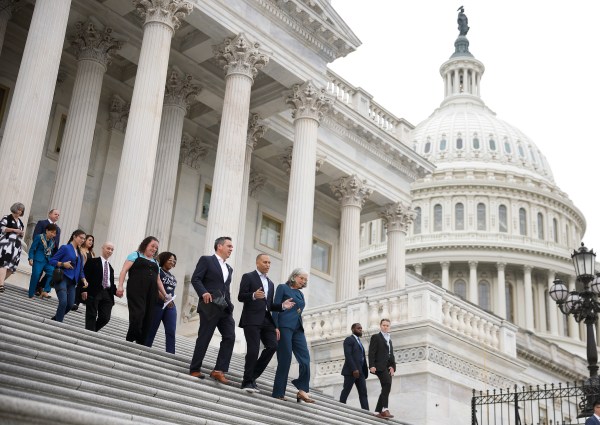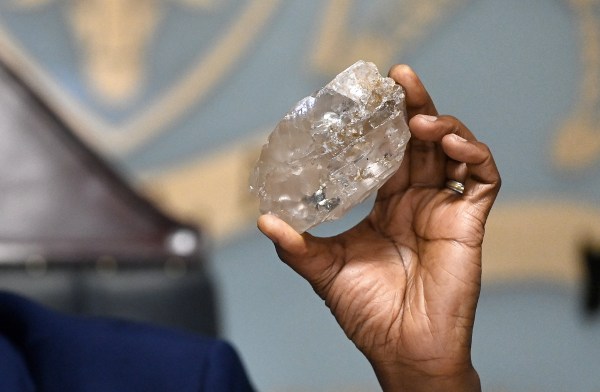In many cultures, holidays are celebrated in tandem, on consecutive days. Halloween is followed by the Day of the Dead; Christmas is followed by Boxing Day; Thanksgiving is followed by Black Friday; New Year’s Eve is followed by, uh, New Year’s Day.
There’s a special pairing for pundits: Election Day is followed by The Feast of Hot Takes.
On The Feast of Hot Takes, you gather piecemeal results spread across different regions from the previous evening and arrange them to form a mosaic that perfectly matches your priors. If you’re pro-choice, a good night for the pro-choice party means the election was about abortion. If you hate Donald Trump, a bad night for Trump’s party means the election was about Trump. If you can’t bear the plain truth that Joe Biden is now the underdog in 2024, a good night for Biden’s party means he isn’t actually an underdog.
Readers should take special care when consuming commentary on The Feast of Hot Takes, as those of us who make a living preparing it are never more blinded by our prejudices than today. The more cynical among us might have even prepared their reactions in advance of the results.
Before succumbing to that blindness myself, I’ll resist it (a little) by pointing out that Tuesday’s results weren’t that bad for Republicans.
They lost the gubernatorial race in Kentucky, a red state. But they were up against an incumbent in Democrat Andy Beshear, and not just any incumbent. The Beshears are a political dynasty; Andy’s father Steve served two terms as governor in the past 15 years. And Andy Beshear is no “Hamas liberal” of the sort with which we’ve all become unhappily familiar on social media over the past month. His approval rating in Kentucky before the election was 43 percent—among Republicans. Across the entire electorate, it was 60.
He defeated GOP up-and-comer Daniel Cameron by 5 points. Not a great result for the right, but nothing to despair over.
The same goes for Virginia, where Glenn Youngkin and the GOP invested heavily in trying to turn the state legislature red. Its two chambers had been closely divided, with Democrats holding a narrow edge in the Senate and Republicans a narrow edge in the House. Results in some races are still pending as I write this, but the takeaway is clear: The two chambers will remain closely divided next year, albeit with Democrats now in control of both.
That’s a blow to Youngkin, who aimed to prove that he could work Republican magic in a blue state for the second time in two years. He invited Virginia’s voters to hand him and his party a mandate to govern and they refused. But Republican candidates performed reasonably well, winning in every district that went for Biden in 2020 by 9 points or fewer. They even gained a seat in the state Senate. Treating that as a devastating failure is akin to calling a candidate a hopeless loser if he falls short with 49 percent of the vote and a major success if he prevails with 51 percent. A 2-percent difference is not the stuff on which sweeping conclusions should be drawn.
The one truly disheartening loss the right suffered on Tuesday came in Ohio, where pro-lifers were routed in a ballot initiative on abortion. But that was expected, as routs have become old hat since Roe v. Wade was overturned. How much more disheartened on that subject can a conservative realistically be?
Nothing terribly surprising happened. Unless you find it surprising that the president’s party cleaned up electorally at a moment when the stench from his job approval can be smelled from miles away. And not for the first time.
Which is pretty odd, come to think of it. Why is it happening?
The moment has come on this Feast of Hot Takes for me to saddle up my own hobby horse. Let’s ride.
One of our two major political parties is still recognizably a party, loosely held together by a shared commitment to a suite of issues. (Well, most issues.) The other is not.
That gives the first party a structural advantage in elections. And that advantage becomes more pronounced when an issue that unites every bloc in its coalition is placed front and center on Election Day.
Neither the Trump-fueled crack-up of the GOP nor the end of Roe alone would have sufficed to propel Democrats to the series of victories they’ve enjoyed since last fall, but together they’ve become a force multiplier. More than a year after Dobbs, liberals remain motivated to turn out and register their dissent at the polls to state abortion restrictions. It’s not just a matter of wanting to roll back Republican bans on the merits, I suspect, but an outlet for the accumulated frustration they felt as Trump went about appointing the justices who would obviously end up unmaking Roe. Their desire for revenge still hasn’t been sated.
Democrats in Kentucky and Virginia exploited that on the trail. Andy Beshear attacked Daniel Cameron for defending the state’s “no exceptions” abortion law in court; liberals running for state office in Virginia claimed Youngkin’s proposal for a 15-week ban was a red herring that would eventually open the door to stricter rules. (It’s hard to convince voters otherwise after you’ve argued for decades that the practice amounts to murder.) Without abortion as a live issue, it’s anyone’s guess if their narrow margins of victory would have held.
Typically those margins don’t hold when the leader of the party is an enfeebled political albatross. But that’s where Democrats’ structural advantage comes in.
Regular readers know my shtick: I think the Republican Party has become an unhappy amalgam of two distinct and mutually suspicious factions, the Conservative Party and the MAGA Party. The Conservative Party consists of traditional Republicans who, in keeping with tradition, treat abortion as a priority. The MAGA Party consists of populists who care mainly about empowering Donald Trump, not the Religious Right social agenda of the pre-Trump GOP. Ideologically—and even geographically—they’re often at odds.
In elections where Trump isn’t on the ballot, the MAGA Party doesn’t have much reason to turn out. And if they do, and abortion happens to be on the ballot, their heterodoxy means they can’t be counted on to vote Republican the way members of the Conservative Party can.
And the Conservative Party isn’t as big as it used to be. Many traditional Republicans have fled the GOP during the MAGA era, unwilling to stick with a movement whose civic and policy priorities no longer match their own. (Dispatch members are overrepresented among them, I suspect.) Those partisans used to be the foot soldiers of the right in off-year elections. Now some don’t get off the couch on Election Day.
MAGA voters don’t care about the GOP, and many traditional conservatives who used to care about the party now actively disdain it. Call it “deinstitutionalization”: When an institution like the party is replaced by a personality cult, neither supporters nor detractors of the leader of that cult have a reason to support that institution at the polls when he’s not a candidate. There may be discrete policy issues that would unify both blocs and galvanize them to turn out—a referendum on gun rights or border security, say—but abortion ain’t one.
To make matters worse for Republicans, the electoral realignment driven by right-wing populism tends to redound to the advantage of Democrats in off-year elections. The two parties are engaged in an ongoing “trade” of sorts, in which Democrats receive higher-educated white voters while Republicans receive working-class voters of many races in return. That’s a good trade for the GOP in the aggregate, as there are far more blue-collar Americans than white-collar ones. The problem is that the higher-educated are more likely to turn out, giving Democrats an edge in elections like Tuesday’s where no major national office is at stake to get voters excited to vote.
If you want to see what it looks like at the polls when a party is deinstitutionalized, skim through Nate Silver’s recap of the last 11 election cycles dating back to 2017. Yeesh.
All of that being so, you can see why some Democrats digested the results from Kentucky, Virginia, and Ohio and concluded that recent presidential polling is underselling Joe Biden’s chances. The party overperformed last November in a bad national environment, and now it’s overperformed again in a bad national environment. Biden will overperform too!
Hopefully you can also see why that’s, well, stupid. What if Democrats aren’t overperforming in an environment that’s bad for them, lobbyist Liam Donovan wondered after the results came in?
What if Joe Biden is underperforming in an environment that’s been pretty good for the left?
If deinstitutionalization explains off-year Republican losses, the problem with feeling optimistic about Biden’s chances is obvious: 2024 isn’t an off-year.
Assuming Trump is the GOP nominee, the MAGA Party will be out in force at the polls next fall. Populists with no use for pre-Trump Republicans and little use for post-Trump Republicans besides Trump himself will show up in numbers for their hero.
Some disaffected traditional conservatives who normally can’t bring themselves to support Trump’s party will find themselves lured back by high-stakes partisan temptations once the presidency is on the line. What if Clarence Thomas dies in 2025? What if China invades Taiwan? There are always arguments—some better than others—to prefer even the worst Republican to a Democrat.
Next November’s Trump-Biden electorate won’t look anything like Tuesday’s electorate, and the issues with which it’s consumed will be more diverse than abortion.
Late Tuesday night, while Democrats were popping the champagne, CNN quietly released a new presidential poll that put Trump ahead of Biden nationally 49-45. That 4-point lead exactly matches the margin by which he led in the already infamous New York Times poll of battleground states released last weekend. The takeaways from both surveys lined up perfectly: Trump is doing shockingly well with young and nonwhite voters while public confidence in Biden’s physical ability to do the job has collapsed.
When voters were asked by CNN’s pollsters if there was any chance they’d vote for Trump, 48 percent said no. But 51 percent said no when asked the same of Biden.
Needless to say, Biden’s political liabilities are far more serious than Andy Beshear’s or Virginia Democrats’ political liabilities. It’s nice for Democrats that their candidates in state races aren’t being blamed for inflation or for bankrolling costly foreign conflicts or for a disastrous retreat from Afghanistan or for the commander-in-chief seeming unnervingly frail. But the quarantine from Joe Biden’s unpopularity that they’ve enjoyed until now will necessarily end next year.
And there’s another problem for Democrats. If they’re planning to run on abortion, abortion, and more abortion, Trump may be better positioned than any Republican opponent to parry that attack.
I say “may” because he is, after all, the man who shaped the Supreme Court that ended Roe, a grudge pro-choicers will bear him forever. But if there’s any GOP candidate who’s willing and able to triangulate politically on abortion, it’s Trump. He’s already begun, you may recall, with no hint of any backlash in his primary polling. He supports exceptions for rape, incest, and the life of the mother; he’s hinted that regulating the process should be left to the states; and he’s started babbling about a great, big, very strong compromise on the subject with which all sides will be happy.
It is strange but true that the man who ended Roe sounds more moderate on abortion than his nearest Republican challenger, who, lest we forget, signed a six-week ban into law earlier this year in Florida and will hear about it every hour of every day from Democrats if he somehow ends up as his party’s nominee. If you’re a Democratic strategist eager to leverage abortion next November, you might rationally prefer DeSantis as your opponent to Trump.
To come up with a theory of how Tuesday’s results portend yet another Republican disappointment in 2024, you need to believe in the infallibility of what Nate Silver calls “the Trump trap.”
What’s also interesting about 2016 and 2020 is that Trump underperformed Republican congressional candidates both times. In 2016, Trump lost the popular vote to Hillary Clinton by 2 percentage points, while Republicans actually won the popular vote for the House by 1 point. In 2020, the GOP lost the House popular vote by 3 points, less than Trump’s 4.5-point margin of defeat.
So the argument here is not that Trump is a popular candidate—he is emphatically not popular. Rather, it’s that Republican performance without Trump on the ballot may be even worse. They still suffer from selecting poor candidates—many of them endorsed by Trump—and having unpopular policies on positions like abortion. But they don’t get the enthusiastic turnout that Trump and his celebrity gives them. Instead, they often wind up with weird nominees that repel swing voters and motivate Democratic turnout without exciting their own base.
When Trump isn’t on the ballot, deinstitutionalization drives down Republican turnout. When he is on the ballot, turnout surges on the right—but more so on the left, sparked by fear and loathing of Trump himself. For the GOP, remade in the image of a single hyper-polarizing demagogue whose support is fantastically deep but not very wide, it may be the case that they now can’t win reliably with Trump or without him.
That’s the price the right has paid for investing politically in de facto autocracy instead of capable partisan institutions. A party with its own independent identity and a meaningful policy agenda wouldn’t have that problem; the agenda itself would be reason enough for members to turn out and support it. That’s how the Democratic Party operates. And the Democratic Party keeps winning elections.
For now.
What Silver doesn’t know, and can’t yet know, is whether Americans have grown so grimly pessimistic about Joe Biden’s fitness for office that they’ll free Republicans from the “Trump trap” next year. As I recall, the last time Trump had the good fortune to face a Democrat as unpopular as he is, it worked out okay for him.
The only sure conclusion on The Feast of Hot Takes, I think, is that abortion is now locked in as the preeminent issue Democrats will run on next year.
“Bidenomics” isn’t going to cut it, as many members of the president’s party have come to realize.
Trump will be less vulnerable on abortion than other Republican contenders, as I’ve said, but there’s one pledge that Biden and his party can make that Trump can’t hope to match them on. Democrats can promise to codify the Roe regime in a federal statute—making abortion legal again in all 50 states—and end the filibuster in the Senate if necessary to do so.
That would be an unsavory pledge. I don’t want abortion legal without limits; I see no constitutional authority for Congress to legislate on the subject; I dislike the idea of the federal government preempting state laws; and I think the filibuster is a useful way to ensure a degree of bipartisan consensus on major legislation.
But it’d be political malpractice for Democrats not to run on it given how well the issue has served them over the past year. Making the election a referendum on Roe would bring disgruntled “Hamas liberals” back into the Democratic tent, galvanize crossover votes in battleground states, and possibly save the Senate for the left in a cycle where they seem all but certain to lose it. It might also force Trump toward the center on the issue, widening his rift with devout pro-lifers.
It would be ironic if a right-wing party that now believes in little more than culture war ended up being overwhelmed at the polls by a left-wing culture war, but that’s clearly Biden’s best bet at this point. Call it a “Trump trap” of a different sort: Having delivered the victory on abortion Republicans spent 50 years seeking, he and the party might end up being consumed by it.







Please note that we at The Dispatch hold ourselves, our work, and our commenters to a higher standard than other places on the internet. We welcome comments that foster genuine debate or discussion—including comments critical of us or our work—but responses that include ad hominem attacks on fellow Dispatch members or are intended to stoke fear and anger may be moderated.
With your membership, you only have the ability to comment on The Morning Dispatch articles. Consider upgrading to join the conversation everywhere.